What draws someone to tarot isn’t always about seeking answers from mysterious forces. Sometimes, it’s something gentler, a quiet nudge to slow down, reflect, and listen to yourself with new ears.
This guide is written for anyone who feels that curiosity. Maybe you’re just starting out, or maybe you’ve been flipping cards for years and would like to deepen your connection. We’ll walk through the structure of tarot cards, discuss how to use them for self-reflection, look at practical steps for readings, and talk honestly about keeping your practice organized and meaningful.
Some parts might seem simple. Others might feel a bit tangled, and that’s okay. Reading tarot is as much about the winding journey as it is about clarity.
How tarot reveals more than fortunes
Most people have seen images of tarot cards, vibrant, sometimes dramatic, mysterious. While fortune-telling and the unknown are often paired with tarot in popular culture, there’s a softer, more grounded side: using cards as mirrors for your own thoughts and life patterns.
Tarot is less about predicting the future, and more about understanding the present.
The roots of this practice are not in conjuring fate, but in harnessing symbols and archetypes to unlock wisdom you already carry within. With structure, intention, and a willingness to reflect, these cards can become a tool for gentle, ongoing self-discovery.
Understanding the structure of tarot decks
Before you pick up a deck, it helps to understand what you’re holding. While there are many artistic variations, traditional decks follow a core layout: 78 cards divided into major and minor arcana.
Major arcana: the story of the soul
The major arcana cards are the heart of tarot. Twenty-two cards, each depicting a major stage or lesson on the path of life. You’ll find characters like The Fool, The Magician, The High Priestess, and others. Think of them as chapters, or turning points, in a bigger journey. Each carries a deep archetypal meaning related to personal growth, spiritual themes, and pivotal moments.
- The Fool: New beginnings, trust, leaps of faith.
- The Hermit: Solitude, introspection, retreat.
- The Tower: Sudden change, breakthrough, release.
- The World: Completion, integration, fulfillment.
When these cards appear, they often point to larger themes or cycles, sometimes feeling almost like signposts in your personal myth.
Minor arcana: daily patterns and actions
While the majors draw the big picture, the minor arcana is about everyday experiences and your response to them. There are 56 cards in the minor arcana, divided into four suits. Common suits are Cups, Swords, Wands, and Pentacles, each linked with a specific aspect of life.
- Cups: Feelings, relationships, intuition.
- Swords: Thoughts, conflict, decisions.
- Wands: Passion, creativity, momentum.
- Pentacles: Work, finances, the material world.
Each suit is numbered Ace (1) through 10, and includes four court cards: Page, Knight, Queen, and King, characters who carry energies or sometimes represent real people or approaches in your life.
Archetypes and symbolism: the universal language
What makes tarot special isn’t just the structure, but the rich tapestry of symbols on each card. A lion, a river, a rising sun, these details may seem random, but they tap into the shared language of myth and psychology. Even if you forget a textbook meaning, your eyes and mind are already reading these images. It’s okay to trust your first impression.
Getting to know your deck: building a personal connection
Your deck will likely feel unfamiliar at first. That’s fine; relationships are built slowly with time. Here are some gentle ways to begin:
- Spend time looking at each card individually. Notice images, colors, and emotions that come up. Try not to rush.
- Shuffle the deck in your hands. Feel the texture, let the cards slip and slide. This isn’t about superstition, but about forming a physical sense of comfort.
- Pick a card each day. Ask, “What should I keep in mind today?” and see what resonates. Even if you’re skeptical, let yourself be curious.
- If it feels right, keep a journal of your observations. Don’t worry about writing eloquently, bullet points or doodles are enough.
Getting to know your deck is getting to know yourself in a new way.
The historical path: from playing cards to inner work
Understanding where tarot comes from can help soften anxieties about “doing it right.” The earliest decks trace back to mid-15th century Europe, where they began as playing cards. It was only much later, in the 18th and 19th centuries, that writers, mystics, and psychologists layered new meanings onto their images.
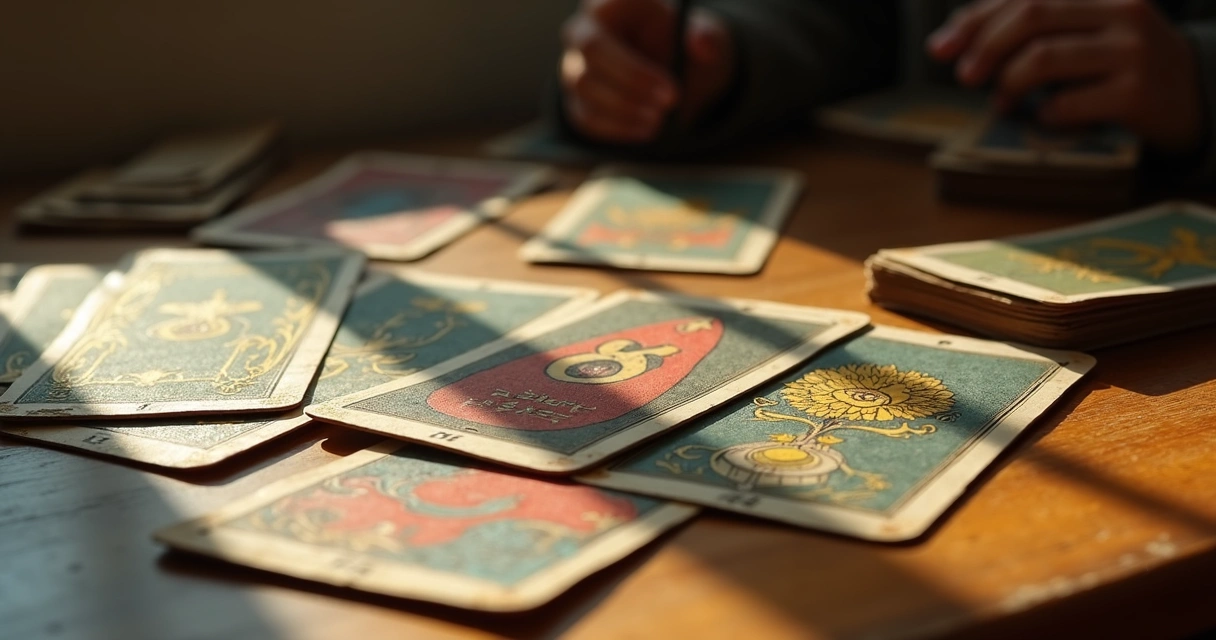 For many years, tarot was used for parlor games rather than solemn rituals. Only around the turn of the twentieth century did it become closely tied to spiritual movements, psychology, and self-reflection. Carl Jung saw tarot images as a way to access the collective unconscious, the layered stories and symbols we all share, buried deep within.
For many years, tarot was used for parlor games rather than solemn rituals. Only around the turn of the twentieth century did it become closely tied to spiritual movements, psychology, and self-reflection. Carl Jung saw tarot images as a way to access the collective unconscious, the layered stories and symbols we all share, buried deep within.
So, while tarot now finds a home in mystical and self-help circles, it also has roots in both play and serious study. This blend of history gives you permission to take your own approach, somewhere between structure and intuition.
The core principles of reading tarot for self-discovery
Whether you’re reading for yourself or someone else, three ideas form the groundwork for a mindful practice:
- Questions shape answers. The more clearly you can phrase your question or intention, the more meaningful the reading will be. Try open-ended questions such as, “What am I overlooking about this situation?” or “What should I focus on during this transition?” Avoid yes/no formats at first; begin with curiosity.
- Interpretations are flexible. Cards don’t hand out direct instructions or fixed truths. They invite you to think, to see angles you may have missed, to notice what resonates with your own experience.
- Symbolism is powerful. Every card and image is layered with centuries of meaning, but your own reaction, the tug of recognition, the flash of insight, matters most. You are the true interpreter.
Some days, a card might feel on-the-nose. Other days, its meaning may seem complicated or even unhelpful. That’s normal. Part of self-discovery is allowing yourself to sit with both clarity and mystery, at least for a while.
Practical preparation: before you begin a tarot session
Reading the cards is not just about shuffling and spreading, your mindset affects everything. Preparation doesn’t have to be mystical. It can be as simple as a pause for deep breathing, a lit candle, or even jotting your question on paper.
- Find a calm space. It doesn’t have to be silent or sacred, but somewhere with limited distractions will help you focus.
- Set a small intention. This could be gratitude, curiosity, or even skepticism, whatever feels most honest to you today.
- Phrase your question clearly. The more specific and honest you are, the more relevant the insights may feel.
- Relax your expectations. Remind yourself you’re not searching for perfect answers, but noticing your own reactions.
Preparation habits will change as you practice. Some readers light incense or meditate; others read at the kitchen table with coffee. The goal is simply to become present, so you and your deck can share the moment.
How to conduct your first reading: step-by-step guidance
If you’re new, the pressure to do it “right” can be, frankly, a bit much. Here’s a simple guide to focus on process, not perfection.
- Shuffle the cards thoughtfully. Hold your question in mind or say it aloud. As you shuffle, imagine your energy, your thoughts, worries, hopes, gently mixing into the deck.
- Cut the deck in a way that feels right for you. Some people divide it into three piles and restack them. Others just take cards from the top. Don’t overthink, do what feels comfortable.
- Choose a simple spread. For your first reading, start small. The one-card draw provides a direct reflection. Or, try the three-card spread:
- Card 1: Situation or present moment
- Card 2: Challenge or obstacle
- Card 3: Guidance or potential outcome
- Lay the cards in a row. Flip them over one by one, taking your time.
- Look at each image closely. Before you check the “book meaning,” notice your first reactions. What colors stand out? Which character catches your eye? How does the scene feel?
- Refer to guidebooks or sources if you like. It’s okay to look up traditional meanings. Write down a few keywords for each card.
- Combine your notes and impressions. Try to write a short sentence about what you see connecting the story between the cards. How do the images, numbers, or suits interact?
- Pause and reflect. Sit with the reading for a moment. Does it prompt a feeling or question you hadn’t considered? Use it as a springboard for journaling or creative thinking.
Your first reading is a conversation, not a test.
If you’d like to see a breakdown of spreads and sample questions, you can find ideas at this basic tarot reading guide.
Symbolic interpretation: letting intuition guide you
It’s so tempting to memorize definitions, but tarot really shines when you let go a little. The mind’s natural tendency is to make connections, to see a waterfall on a card and remember a moment of release, or to see a sword and relate to a recent argument or a sharp insight. Trust those associations. Traditional meanings are a framework, not a fence.
- Notice any patterns between the cards. For example, do two or more cards share similar imagery?
- If you’re stuck, pay attention to recurring colors, action, or directional cues. Is one character facing away while others face forward?
- If a card feels negative or puzzling, try asking, “What is this showing me that I don’t want to see?”
- Compare your readings over time. Sometimes the message becomes clear only after a few days or weeks.
Intuition isn’t always loud. Sometimes it whispers.
Advanced readers often describe “feeling into” the cards. They notice sensations, temperature, or mood shifts. Eventually, your own symbolic language develops, and certain images take on personal meaning for you.
If you’re interested in growing your intuition further, more thoughts on this are offered in these tips for developing tarot intuition.
Steadying your mind: asking clear questions
Questions are the heartbeat of self-guided tarot. But not every question serves self-discovery equally.
- Focus on action or perspective, not prediction. Try: “What should I know about my relationship to work right now?” instead of “Will I get that job?”
- Ask for insight, not certainty. Try: “Where am I struggling to communicate?” rather than, “What will someone say to me?”
- Stay open-ended if you can. Rigid questions can narrow your perspective, while open ones help you see more possible meanings.
Refining your questions is a practice, too. Some sessions may not feel clear or transformative, and that’s perfectly normal. Over time, you’ll sense which types of questions bring you closer to yourself and which leave you feeling confused.
Advanced reading: moving beyond single card draws
Once you’re familiar with how the images trigger your own reactions, you can build on basic readings. More complex spreads—while never required—can help you notice connections and dig deeper into your concerns.
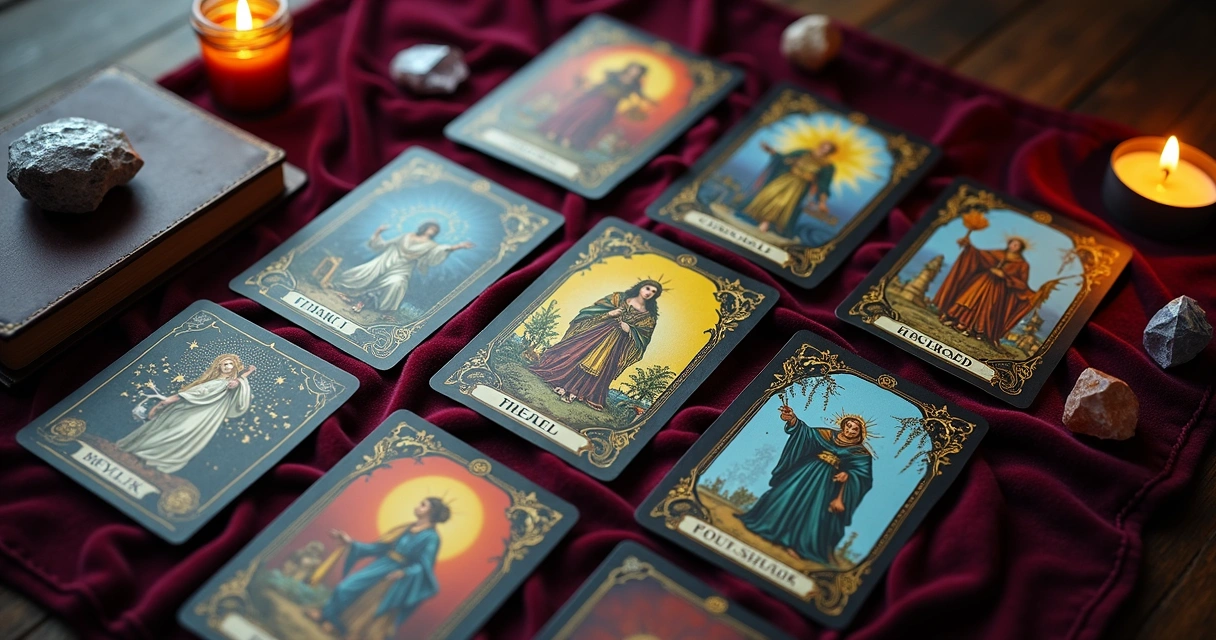 Celtic cross: This classic spread uses ten cards to map out the present, challenge, conscious and subconscious influences, past and future trends, and more.
Celtic cross: This classic spread uses ten cards to map out the present, challenge, conscious and subconscious influences, past and future trends, and more.- Relationship spread: Useful for gaining new perspective on connections with others—whether romantic, professional, or familial.
- Year ahead spread: Draw twelve cards, one for each month, to set intentions or reflect on upcoming patterns.
- Shadow work spread: Three or more cards help you see parts of yourself you might typically avoid or misunderstand.
As your confidence grows, you might naturally design your own spreads or adapt existing ones to better fit your questions. For guidance on boosting confidence in readings, there’s a helpful article on practical steps for tarot confidence.
A word of caution, more cards isn’t inherently better. Sometimes, a single card delivers the clearest mirror. Large or complex spreads can be rewarding, but only if approached with intention and care.
Recording and tracking your readings: building awareness
One of the most powerful tools in personal growth is simple record-keeping. Writing down your readings, even if you don’t review them for a long time, leaves a breadcrumb trail of your evolving perspective. Patterns, shifts in emotion, or helpful nudges become easier to spot over time.
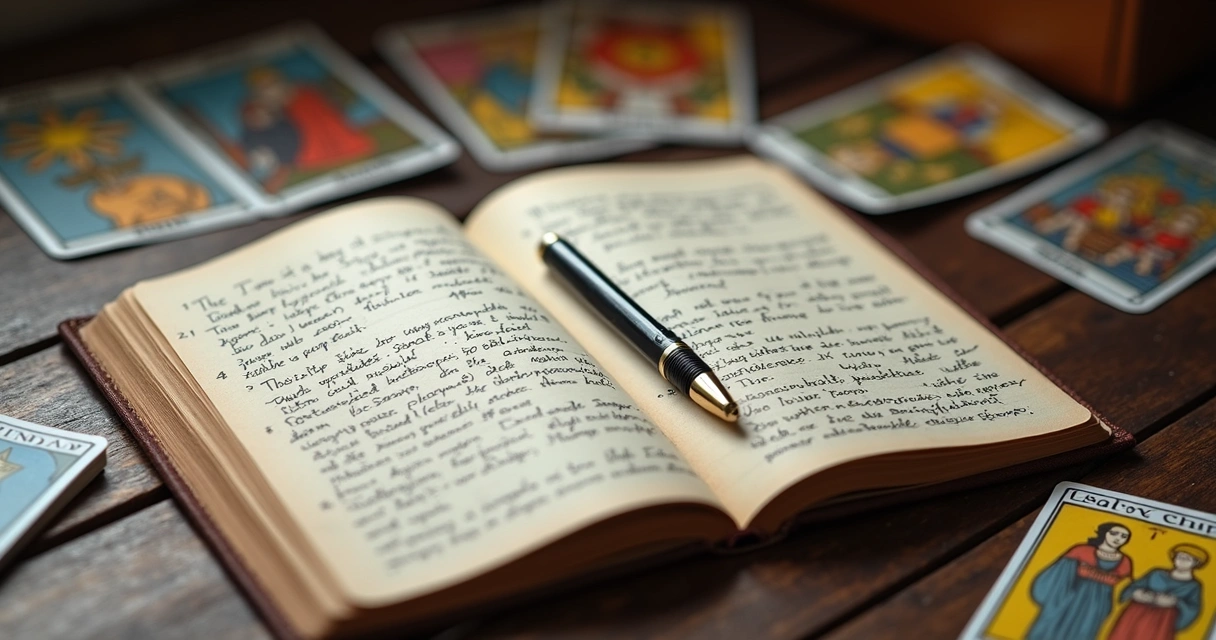 Journaling: After every reading, write the cards drawn, your initial impressions, and any questions or feelings that arose. Include the date and circumstances.
Journaling: After every reading, write the cards drawn, your initial impressions, and any questions or feelings that arose. Include the date and circumstances.- Pattern spotting: Over time, review your entries. Which cards repeat? What questions keep surfacing? Do your interpretations shift with your mood or life events?
- Integrating feedback: If you read for others, take note of which readings really helped them reflect or move forward. What was different about those sessions?
If you’re looking to structure your journaling or want more in-depth reflection ideas, these tips for tarot-based reflection can help you get started.
Interpreting patterns for growth
With a handful of readings recorded, something surprising often happens: it becomes easier to notice when a message keeps returning. Maybe you continually pull cards about boundaries, or always see a certain suit during a stressful season. This isn’t magic. It’s your subconscious drawing patterns into view.
- Notice repeated themes: If the same card or suit appears again and again, pause to consider which area of life it mirrors.
- Reflect, don’t obsess: Not every pattern is a sign. Sometimes cards repeat simply because your attention is drawn to the same question multiple times.
- Update your interpretations: A card that once symbolized fear may start to feel like a nudge toward change as your perspective matures.
Growth is less about answers, and more about the questions you’re willing to keep asking.
This cyclical, gentle learning process helps make the practice of reading cards valuable beyond single sessions. Over time, readings form a mosaic that reflects your seasons of change, struggle, and strength.
Reading for others: responsibility and self-awareness
Once you feel comfortable with your process, you might wish to offer readings to friends, family, or clients. This can be rewarding, but it also brings fresh responsibilities.
- Consent matters: Only offer readings when asked. Unsolicited advice, even from a place of kindness, is rarely helpful.
- Stay open, not prescriptive: Frame interpretations as possibilities, not absolutes. Empower the querent to draw their own conclusions or notice their own insights.
- Respect privacy: Keep readings and shared stories confidential.
- Know your boundaries: If a question feels too serious, complex, or outside your comfort zone, it’s okay to step back or suggest other avenues of support.
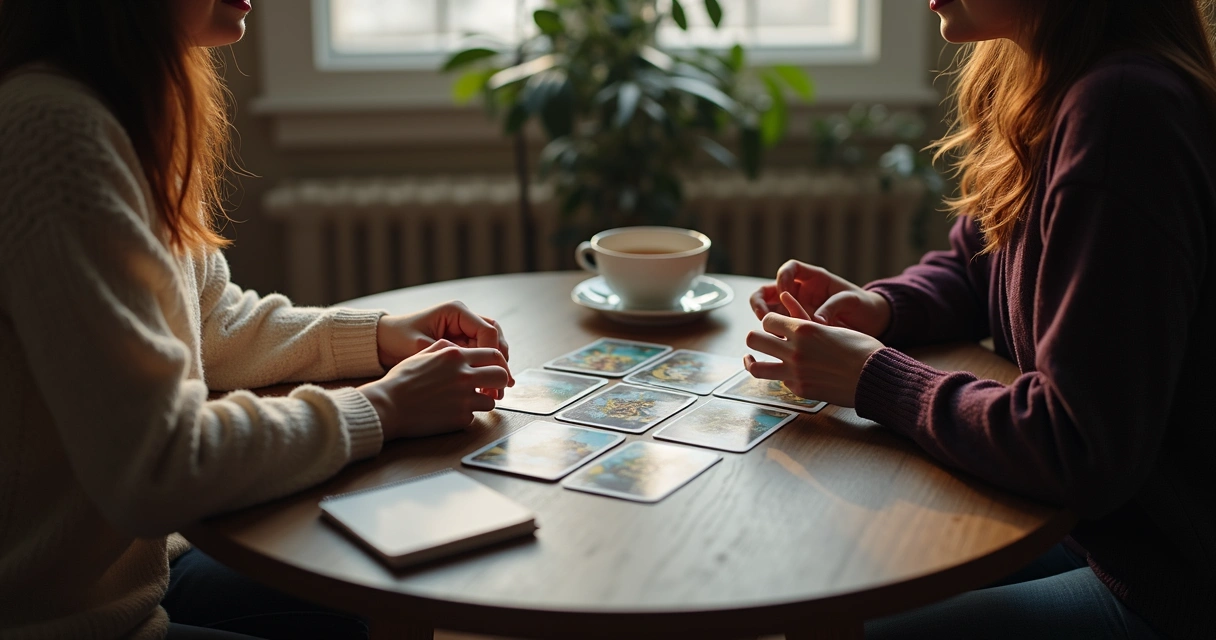 Offering a reading to someone else can feel vulnerable. The goal is to hold space for their thoughts, not to perform magic or prove your prowess.
Offering a reading to someone else can feel vulnerable. The goal is to hold space for their thoughts, not to perform magic or prove your prowess.
Integrating tarot with other self-reflection tools
Tarot cards don’t need to be your only reflection aid. Many people find it powerful to pair their readings with other tools, whether that’s guided meditation, dream journaling, creative writing, or more traditional psychology exercises.
- Combine methods: For example, you might journal on a card in the morning and revisit it after a walk or meditation. Some use cards to inspire art, poetry, or music.
- Look for resonance: When two approaches point to a similar theme, pay attention. What might your mind be urging you to recognize?
Multiple methods can deepen your process. Sometimes, a pattern seen in your readings echoes in your everyday life, showing up in dreams, conversations, or even work habits.
Responsible and ethical card interpretation
A grounded reading is honest about its limits. Tarot doesn’t diagnose illnesses, make big legal decisions, or guarantee outcomes. Instead, it’s a means to reveal perspectives, stir intuition, and spark constructive questions for self-growth.
- Stay aware of language: Avoid “you must” or “this will happen” statements. Instead, use softer language such as “This may suggest…” or “One possible interpretation could be…”
- Know when to step back: If someone’s issue falls far outside your expertise, especially regarding health, legal, or financial worries, encourage them to seek the right kind of help.
- Be honest about uncertainty: Sharing doubts can actually build trust. No one reading has all the answers to another’s life.
Ethical practice is part of self-care, too. Honoring boundaries, being realistic about what you can offer, and not forcing conclusions creates a supportive environment for genuine improvement.
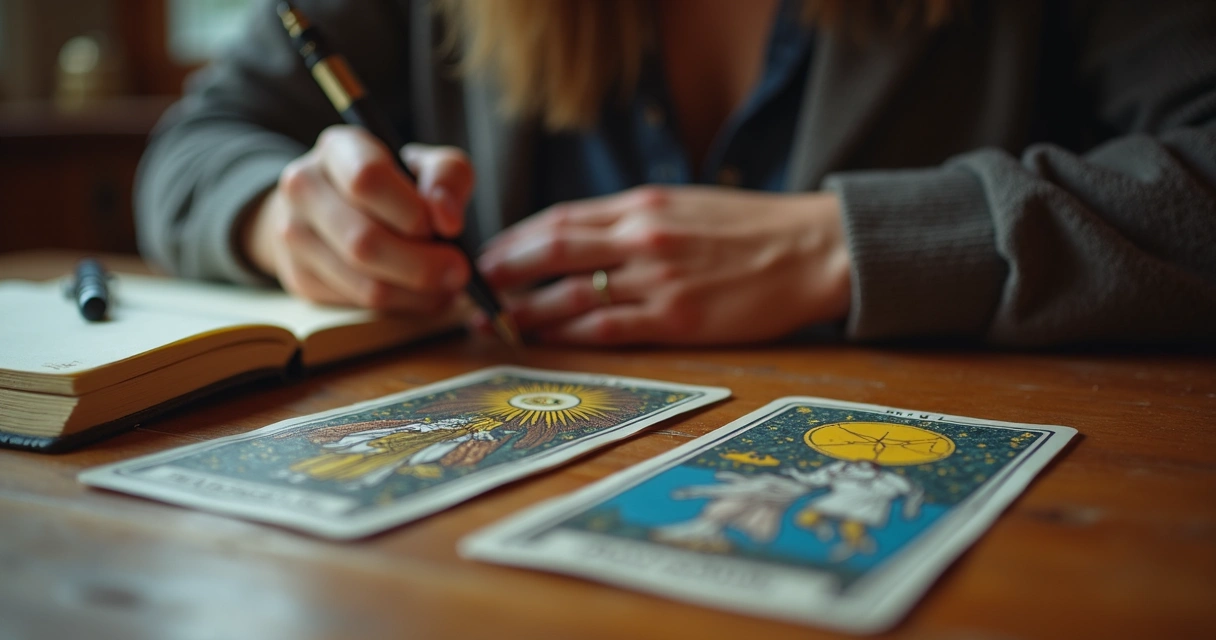 Using tarot to support ongoing self-discovery
Using tarot to support ongoing self-discovery
The most fulfilling thing about regular readings isn’t the sudden epiphany, but the slow and steady deepening of self-understanding. Many people notice, after months of journaling and reflecting, that they’ve grown more self-compassionate, adaptable, or creative.
The more you ask your cards, the more you check in with yourself.
- Build it into routine: Pick a “card of the day” each morning and quietly consider its message. Or, reserve a larger reading for the new or full moon, or moments of transition.
- Pair with other growth practices: You could set an intention each week, or let your reading inspire your next journaling session.
- Let your practice evolve: It’s perfectly normal for rituals to shift. Maybe you’ll read for months, then set the cards aside. You’ll return when you’re ready.
For extra ideas on how to foster reflection and long-term growth, you can review advice at this tarot blog category focused on self-progress.
Gentle advice when you feel stuck or overwhelmed
Sometimes, a reading doesn’t make sense. Or you draw what you consider a “bad card,” and it leaves you rattled. Try to remember:
- Every card has positive and challenging sides. The Tower, for example, signals release and transformation, not just disaster.
- If you feel confused, take a break. Let the reading settle before returning. Sleep on it if you can.
- If discomfort lingers, it may help to share your thoughts in a journal, with a trusted friend, or within a supportive group.
Growth isn’t always comfortable, but it’s always possible.
No single reading defines you, nor should any card dictate your actions. These are simply nudges, questions, and moments for learning.
 Final thoughts: embracing your personal journey
Final thoughts: embracing your personal journey
There isn’t a right or wrong way to approach tarot as a path to self-discovery. Some like detailed rituals. Others keep it light and flexible, drawing cards only as needed. Most hover somewhere between.
What matters most is showing up honestly, being willing to notice, reflect, and sometimes sit with questions longer than you’d like. You’ll find your voice, style, and rhythm, slowly building a practice that mirrors your changing self.
Tarot isn’t a shortcut through life’s messiness, but a chance to bring more of yourself to the present moment. Every reading, even the muddled or awkward ones, has value.
Listen to your own story in new ways, and you may find new ways to live it.
May your journey with the cards offer not just answers, but honest questions, and, when you need it, a quiet moment of insight and care.
Frequently asked questions
What is tarot card reading?
Tarot card reading is a practice that uses a deck of symbolic cards to help guide reflection, self-inquiry, and personal growth. While some see it as fortune-telling, many use it as a way to clarify thoughts, explore options, and connect with deeper parts of themselves. Each card carries traditional meanings, but interpretation often relies on the reader’s intuition and personal context.
How can card reading help self-discovery?
Working with tarot cards prompts you to ask thoughtful questions, reflect on life patterns, and notice feelings or perspectives you might otherwise overlook. The images and symbols act as mirrors for your inner world, often surfacing insights about relationships, challenges, or underlying motivations. Over time, readings help build self-awareness, improve decision-making, and gently support personal growth.
How do I start reading tarot cards?
Begin by familiarizing yourself with your deck, spend time looking at the cards, noticing how they make you feel. Start with simple questions and small spreads (like one- or three-card draws). Focus on your reactions to the images, then check traditional meanings for additional context. Keep a journal to track your experience. As your comfort grows, you can add new spreads, record more reflections, and gently trust your intuition.
Are tarot card readings accurate?
Tarot readings are most accurate as tools for reflection, not prediction. The value lies in the way cards prompt you to notice patterns, consider new perspectives, or explore feelings you might not express openly. The process isn’t about certainty. It’s about supporting self-awareness and making mindful choices. The meaning you find in a reading will often depend on your current mindset and openness.
Where can I find tarot card reading guides?
There are many resources on tarot card reading available to support your journey, including guidebooks, printed materials, and trustworthy blogs. To learn practical steps and simple spreads or study ways to enhance your readings, consider checking helpful articles like this guide to reading basics or practical tips for tarot confidence. These resources focus on self-discovery, skill-building, and gentle guidance.

